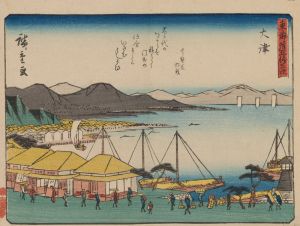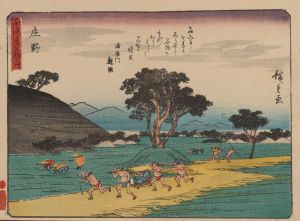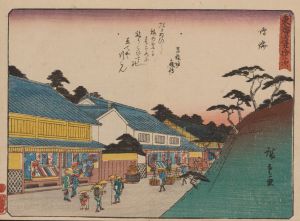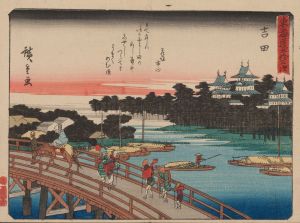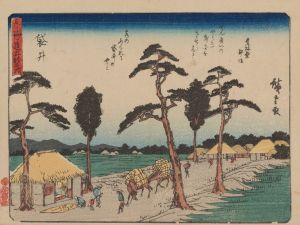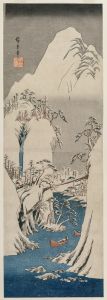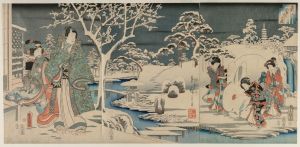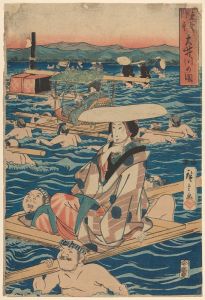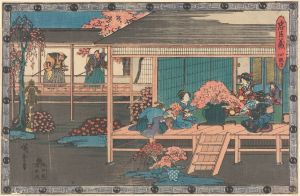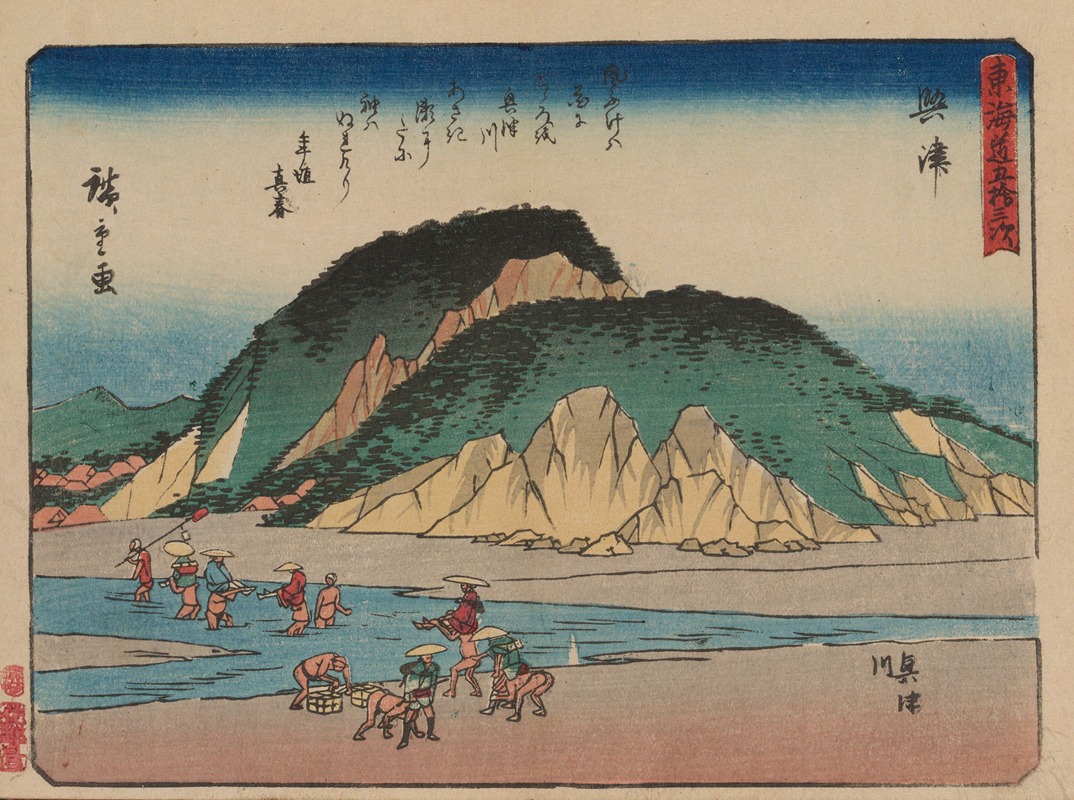
Tokaido gojusantsugi, Pl.18
A hand-painted replica of Andō Hiroshige’s masterpiece Tokaido gojusantsugi, Pl.18, meticulously crafted by professional artists to capture the true essence of the original. Each piece is created with museum-quality canvas and rare mineral pigments, carefully painted by experienced artists with delicate brushstrokes and rich, layered colors to perfectly recreate the texture of the original artwork. Unlike machine-printed reproductions, this hand-painted version brings the painting to life, infused with the artist’s emotions and skill in every stroke. Whether for personal collection or home decoration, it instantly elevates the artistic atmosphere of any space.
Andō Hiroshige, a renowned Japanese ukiyo-e artist of the Edo period, is celebrated for his landscape prints and his series depicting the Tokaido Road, a vital route connecting Edo (modern-day Tokyo) to Kyoto. One of the most famous series by Hiroshige is "The Fifty-three Stations of the Tokaido" (Tokaido gojusantsugi), which consists of 55 woodblock prints, including the starting point, Nihonbashi, and the endpoint, Kyoto, along with the 53 stations in between.
The print "Tokaido gojusantsugi, Pl.18" is part of this series and represents the 18th station along the Tokaido Road. Each print in the series captures a different station and offers a glimpse into the travel and scenery of the time. Hiroshige's work is known for its use of vibrant colors, attention to detail, and ability to convey the atmosphere and mood of each location.
Hiroshige's Tokaido series was created following his own journey along the Tokaido Road in 1832. This journey was part of an official delegation accompanying the Shogun's horses to the imperial court in Kyoto. The experience provided Hiroshige with firsthand observations of the landscapes, towns, and people along the route, which he later translated into his prints.
The 18th station, depicted in "Tokaido gojusantsugi, Pl.18," is known as Okabe. This station is located in present-day Fujieda, Shizuoka Prefecture. The print captures the essence of travel during the Edo period, showcasing the natural beauty and the daily life of travelers and locals. Hiroshige's work often includes elements such as travelers on foot or horseback, local inhabitants, and the natural environment, all of which are depicted with a sense of movement and life.
Hiroshige's Tokaido series was highly popular in Japan and contributed significantly to his reputation as a master of ukiyo-e. The series was not only an artistic achievement but also served as a form of travel literature, providing viewers with a visual journey along one of Japan's most important roads. The prints were widely distributed and collected, influencing both Japanese and Western artists.
Hiroshige's influence extended beyond Japan, particularly impacting Western artists such as Vincent van Gogh and Claude Monet, who admired his compositions and use of color. The Tokaido series, including "Tokaido gojusantsugi, Pl.18," remains a significant cultural artifact, reflecting the historical and social context of the Edo period and offering insight into the art and travel of the time.
Today, Hiroshige's works are held in numerous collections worldwide, appreciated for their artistic beauty and historical value. The Tokaido series continues to be studied and admired for its innovative approach to landscape art and its ability to capture the spirit of an era.





